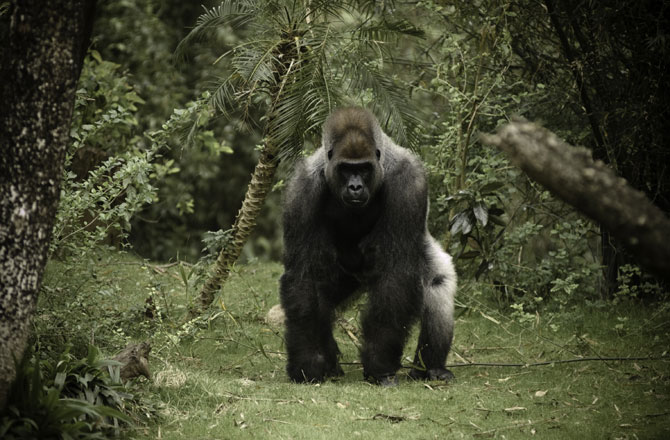Two of the four known groups of human AIDS viruses (HIV-1 groups O and P) originated in western lowland gorillas in Africa, said an international team of scientists.
The scientists conducted a comprehensive survey of simian immunodeficiency virus (SIV) infection in African gorillas. They said HIV-1, the virus that causes AIDS in humans, jumped species to infect humans on at least four separate occasions, generating four HIV-1 lineages: groups M, N, O, and P. Previous research from this team found groups M and N originated in geographically distinct chimpanzee communities in southern Cameroon, but the origins of groups O and P remained uncertain.
The four cross-species transmissions have affected humans in varying degrees of affliction. Group M gave rise to the AIDS pandemic that infected over 40 million people worldwide and spread across Africa to the rest of the world. Group O from gorillas, while not as widespread or as prevalent as group M, infected some 100,000 people in west central Africa. Groups N and P have only been found in a few individuals from Cameroon.
“Understanding emerging disease origins is critical to gauge future human infection risks,” said Martine Peeters of the University of Montpellier in France, who led the research team. “From this study and others that our team has conducted in the past, it has become clear that both chimpanzees and gorillas harbor viruses that are capable of crossing the species barrier to humans and have the potential to cause major disease outbreaks,” Peeters noted. Viral sequencing revealed a high degree of genetic diversity among the different gorilla samples.
“Two of the gorilla virus lineages were particularly closely related to HIV-1 groups O and P. This told us that these two groups originated in western lowland gorillas,” said Beatrice Hahn, MD, a professor of Medicine and Microbiology. The research team consisted of scientists from the Perelman School of Medicine at the University of Pennsylvania, the University of Montpellier, the University of Edinburgh, and others.
Their study was published March 2 in the Proceedings of the National Academy of Sciences.




